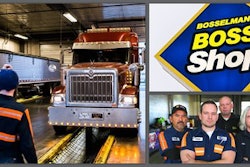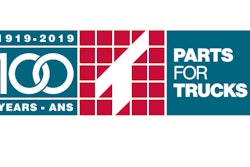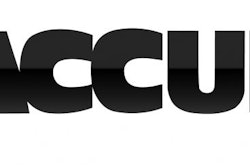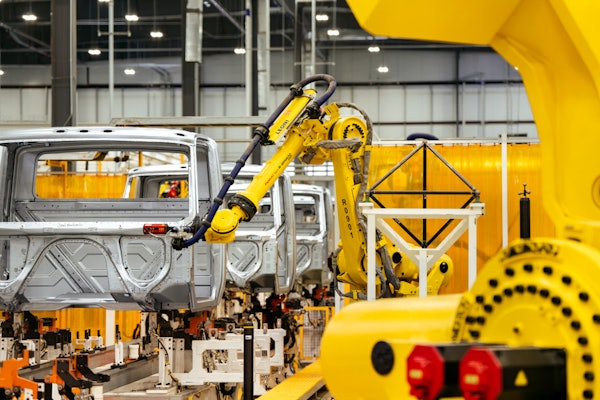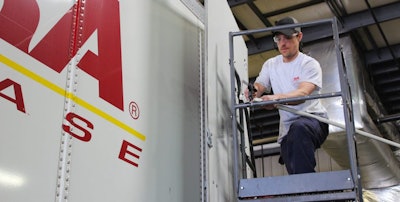
[This article was originally published in 2019 by Trucks, Parts, Service. It has been updated to include more timely information.]
Trailer maintenance often takes a backseat to servicing the truck, but it’s vital to ensure all components are working properly.
While trailers obviously are less complex than powered vehicles, there still are key areas that require regular checks.
A quality on-time preventive maintenance inspection for trailers is the best way to increase uptime, decrease running cost, ensure safety and prevent violations, says Matt Krasney, vice president of fleet management for Penske Truck Leasing.
Inspect, don’t neglect
The most neglected maintenance areas on trailers are the kingpin, the brakes and lubrication, says Cindy Crawford, group director of maintenance and engineering for Ryder Fleet Management Solutions.
A list of weekly and monthly checks should be developed to complement a driver’s pre- and post-trip inspections, says Mark Sabol, platform product manager for East Manufacturing.
“It’s about visual inspection,” says Steve Zaborowski, senior vice president for Xtra Lease. “If you see something’s wrong, you investigate it. If you see something that just doesn’t look right, you shouldn’t just let it ride. You should stop, take a look at it, and make sure the system is working in accordance with how it was planned to be used.”
[RELATED: Tale of the (reflective) tape]
Weekly checks should include looking for structural damage and verifying that all lights function, are in place and are not obscured.
“Lighting issues are easy to identify, which makes them a target for inspections and violations,” Krasney says. “Check for damaged lenses and clean, strong connections in the wiring. Loose connections, water intrusion and corrosion are all common culprits when it comes to lighting failures and can be prevented with proper maintenance.”
Sabol recommends checking the electrical system for chafed wires, missing clips and positive grounding.
Next, he suggests lubricating the fifth wheel, checking for corrosion between the plate and the main rail and looking for loose or missing bolts, cracks and unusual or excessive wear before checking the kingpin for tightness.
Ryder performs more than 200,000 PM inspections per year and emphasizes inspection of the kingpin and the upper plate. “This carries the entire load of the trailer and can often get overlooked in a preventive maintenance inspection,” Crawford says.
The kingpin’s minimum diameter can be checked with a go/no-go gauge, she says. “These are the only components holding the connection between the tractor and the trailer while allowing them to pivot when turning.”
Crawford says contaminants should be cleaned from the upper plate with a scraper to view the plate for damage. Lubrication and inspection are critical for long life of these components, she says.
[RELATED: Guidance for cleaning air brake systems after flooding]
Moving further down the trailer, check the landing gear mounting plates and bracing for cracks; visually inspect all air springs and airlines for chafing; and check the brake valves for leaks and proper operation, Sabol says.
“Check for and remove any foreign material from within the dust shields and drain the condensation from the air reservoirs,” he says.
Crawford recommends keeping top Compliance Safety Accountability violations in mind during PM checks. “Brakes are usually one of the top areas for most companies,” she says. “Opportunities can include the anti-lock brake system. Automatic slack adjuster brake stroke is another area to focus on.”
Keeping them rolling
A tire failure is the most likely cause of a disabled trailer. Craig Porter, operations manager for McCoy NationaLease, pegs rubber as the top trailer maintenance cost.
Sabol suggests checking air pressures regularly and inflating according to the tire manufacturer’s recommendations. Next, verify that the wheel lug nuts are tight.
“Pay particular attention to tire pressure, tire tread depth, the overall condition of the tire, damage and tread separation,” Krasney says. “If the trailer has a tire inflation system, be sure the system is activated and operating correctly, including the warning light, and all hoses and tubes are correctly installed and not leaking, and that the pressure is correctly set using a high-quality calibrated gauge.”
Doug Coffing, Wabash director of LTL sales, says, “A combination of process and technology can help mitigate tire failure, but technology in the absence of process can cost more in the long run. Indicators like tire inflation systems and tire pressure monitoring systems (TPMS) can play a pivotal role in reducing roadside calls for tire failures if there’s a robust plan in place for repair.”
Next, check the oil level in the wheel hubs to ensure proper wheel bearing lubrication; inspect the seals and hubcaps for leaks; and grease all Zerk fittings, Sabol says. Wheel bearings should be checked for excessive wheel-end play.
“Lubrication should be a key area of focus, and brake components are also very susceptible to poor lubrication practices,” Crawford says.
[RELATED: Liftgate demand set to increase as final mile grabs larger share of freight]
In addition to the weekly checklist, Sabol recommends a monthly check of all welds for cracks and an inspection of the suspension system bushings for excessive wear and freedom of movement.
“Check that the bolts are tight,” he says. “If the bolts are below the required torque of 225 lb.-ft., re-torque. If bolts are below 225 lb.-ft. more than once, replace the bolts.”
Check these out, too
Krasney says there are many other systems and components to inspect and maintain beyond tires, brakes and lights.
“Keep the exterior of the trailer clean, especially the undercarriage during winter months,” he says. “Don’t forget the rear-impact guard. It needs to be damage-free, securely attached and correctly labeled.”
Crawford says that while most of a trailer’s base components — such as the brakes, tires, suspension, frame, sliding tandems, kingpin and bumpers — are the same, specialized equipment will need additional inspection criteria.
“Flatbed trailers may have ratchet straps or a forklift mounting that need to be inspected,” she says. “The basic inspection items are the same for most trailers, but we find that adding transport refrigeration, liftgates, forklifts and pintle hooks increases the need to change the PM inspection items.”
“One practice doesn’t fit all,” Porter adds.


